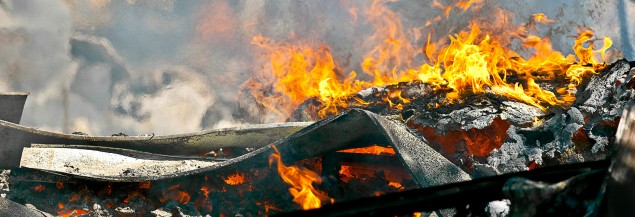MAKING TISHAH B’AV PERSONAL
Like many contemporary Jews, I approach Tishah B’Av with difficulty.
Not because of the myriad restrictions in the Three Weeks, the mourning period that precedes the saddest day on the Jewish calendar, but because of the holiday’s spiritual significance, which can seem far removed from our contemporary lives.
I do Tishah B’Av every year. I fast then and on the Seventeenth of Tammuz; I don’t take a shaver to my face for three weeks; I eschew meat for the Nine Days starting with Rosh Chodesh Av; I don’t do laundry, et cetera.
But for a long time, I didn’t get Tishah B’Av. I found the concept of mourning for an ancient destroyed building, of yearning for the restoration of the Torah’s system of korbanot (sacrifices), of sitting on the floor chanting Eichah (Lamentations), hard to understand. These practices seemed forced or foreign at best, irrelevant at worst.
How did this make me a better Jew?
A rabbi I know offered a suggestion. “Think of the most spiritual experience you ever had in your life. Multiply that by a thousand. That was what happened in the Temple. That is what we’re missing.”
My most spiritual experience: In Jerusalem in 1991, a friend and I walked the streets after dinner one Friday night. We met a man outfitted in a white-and-gray-striped silk caftan, with a shtreimel atop his head and a black gartel around his waist. Aharon Wallis—Reb Aharon—of the anti-Zionist Toldos Aharon Chassidic group, in his thirties, father of six children, joined my friend and me for two hours, giving us a personal tour of Mea Shearim, greeting his friends, telling us about his life as a fifth-generation Jerusalem-born Chareidi Jew, asking about our lives in the US.
He invited us to a Shabbat meal at his home in Mea Shearim. One Friday night I went alone. I shared a delightful meal with Reb Aharon and his wife and their growing brood of small children, most of them sons. I stumbled over my German-cum-Yiddish and fledgling Hebrew, inquiring about the lifestyle of their corner of the Chareidi velt, engaging in the divrei Torah and related subjects that are standard fare at any Shabbat meal.
After the meal, warmed by the servings of chicken soup and kugel, I wandered by myself onto the family’s small, unlit balcony for some fresh air. As is my habit on Shabbat, I started humming a niggun, “Ko Amar,” to myself. Within seconds, a few of Reb Aharon’s sons, and maybe some young cousins—all pre-bar mitzvah age—came onto the mirpeset. They instinctively took my hands and started humming along, dancing for several minutes in a tight circle. They, kids with shoulder-length peyot and pointed white-knit yarmulkes on their heads; I, clean-shaven, with a brown suede kippa.
That’s what I think about every year on Tishah B’Av. That was the most spiritual experience of my life, an example of unbridled, borderless, open-hearted ahavat Yisrael. If the Temple experience was 1,000 times stronger than that, I can join in the mourning.
Last year, I added another Tishah B’Av memory.
The day before the fast, in the waning days of the month-long war between Israel and Hamas terrorists in Gaza, a Palestinian Arab from East Jerusalem commandeered a tractor, steering it into a crowd of Jews and overturning a bus on Shmuel HaNavi Street.
Six persons were injured, one was killed: Rabbi Avrohom Wallis, from Toldos Aharon, a twenty-nine-year-old father of five who worked in a cousin’s tzitzit shop and had agreed to replace a friend as a volunteer for the Asra Kadisha organization that prevents desecration of gravesites. He was at a construction site, killed while making sure no graves at the site were damaged during the work.
Was he one of the young guests at the Wallis table that night in 1991—one of the boys on the mirpeset? His father’s name was Shimon, so he clearly was not a son of my Reb Aharon.
But I felt that I knew Avrohom Wallis. He was kin to the boys who had grabbed my hands. All the Toldos Aharon Wallises are related to each other, friends in the know in Israel tell me.
The Wallis loss was mine.
On Tishah B’Av, we mourn the tragedy of the two Temples that fell on the Ninth Day of Av, and other calamitous events that have taken place in Jewish history over the centuries during the Three Weeks.
In future years, on future Tishah B’Avs, I will think about the spiritual high I experienced on a Mea Shearim balcony. And about the loss to Klal Israel of an innocent Jew who died too young at the hands of modern-day hatred on erev Tishah B’Av.
Now, in an awful way, Tishah B’Av is even more personal.
Now, tragically, it is easy for me to “get” Tishah B’Av.
Steve Lipman is a frequent contributor to Jewish Action.

